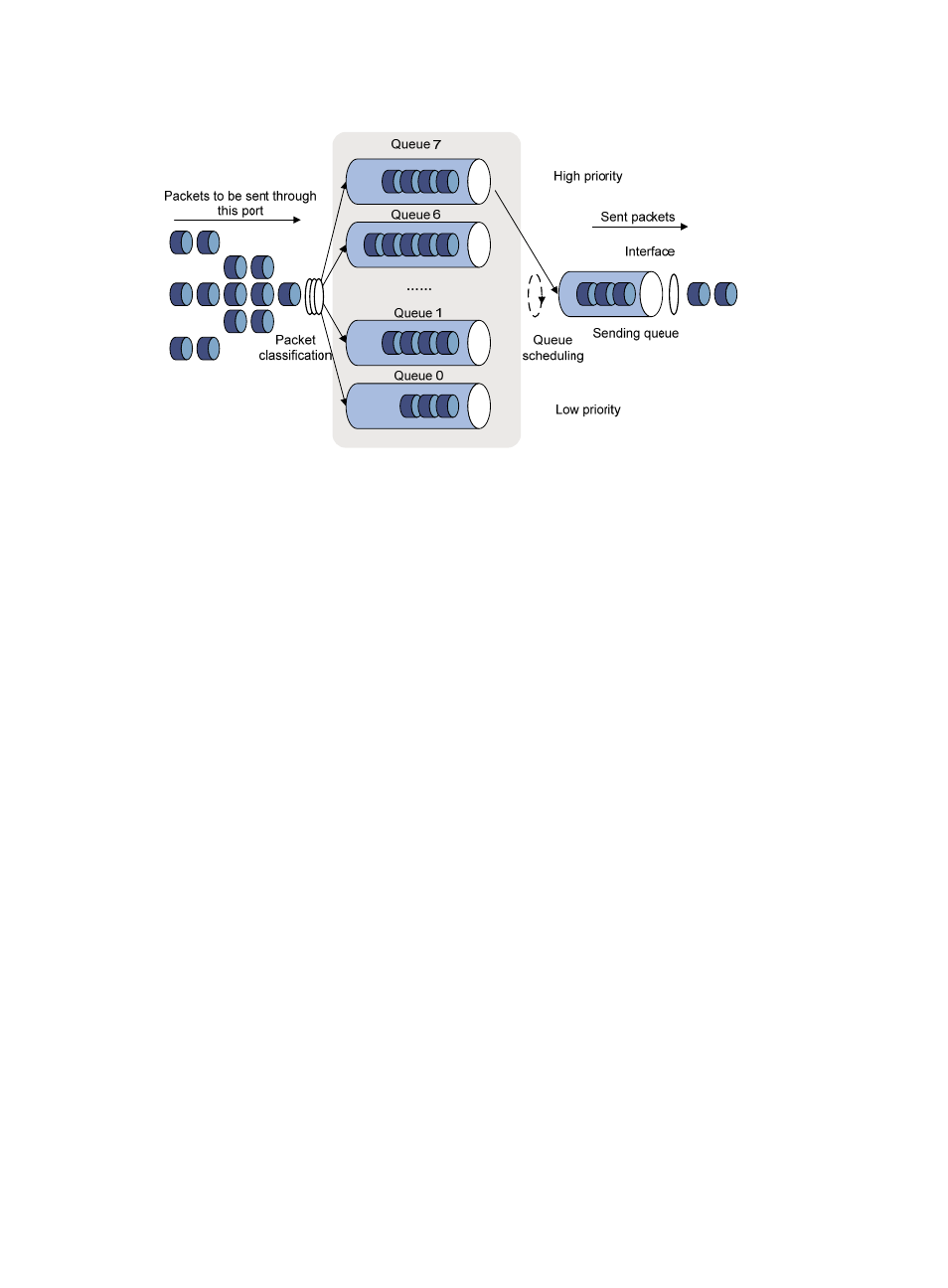Wrr queuing – H3C Technologies H3C S6300 Series Switches User Manual
Page 53

43
Figure 13 SP queuing
In
, SP queuing classifies eight queues on a port into eight classes, numbered 7 to 0 in
descending priority order.
SP queuing schedules the eight queues in the descending order of priority. SP queuing sends packets in
the queue with the highest priority first. When the queue with the highest priority is empty, it sends
packets in the queue with the second highest priority, and so on. You can assign mission-critical packets
to a high priority queue to make sure they are always served first, and common service packets to the low
priority queues to be transmitted when the high priority queues are empty.
The disadvantage of SP queuing is that packets in the lower priority queues cannot be transmitted if
packets exist in the higher priority queues. In the worst case, lower priority traffic might never get
serviced.
WRR queuing
WRR queuing schedules all the queues in turn to ensure every queue is served for a certain time, as
shown in
.
- H3C S5820V2 Series Switches H3C S5830 Series Switches H3C S5830V2 Series Switches H3C S3600V2 Series Switches H3C S6800 Series Switches H3C S3100V2 Series Switches H3C S12500-X Series Switches H3C S5560 Series Switches H3C WX6000 Series Access Controllers H3C WX5000 Series Access Controllers H3C WX3000 Series Unified Switches H3C LSWM1WCM10 Access Controller Module H3C LSWM1WCM20 Access Controller Module H3C LSQM1WCMB0 Access Controller Module H3C LSRM1WCM2A1 Access Controller Module H3C LSBM1WCM2A0 Access Controller Module H3C S9800 Series Switches H3C S5130 Series Switches H3C S5120 Series Switches
